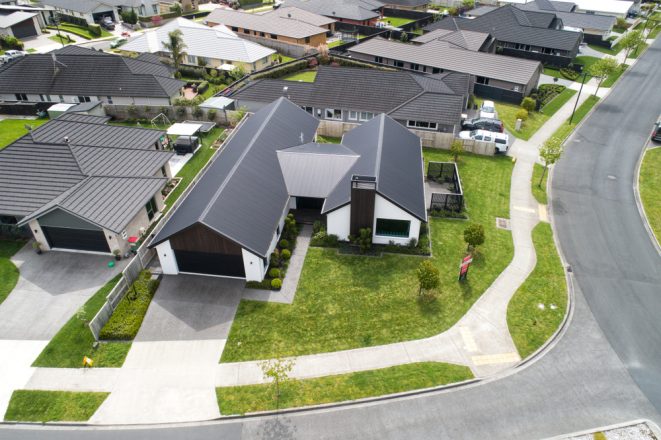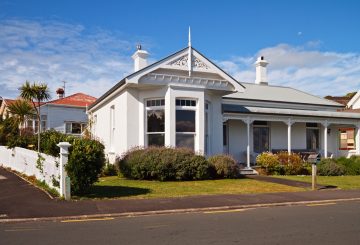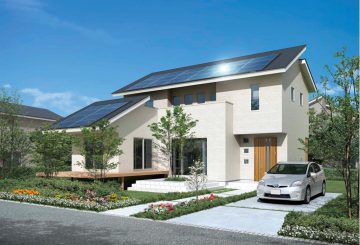Nhà mới sẽ được miễn trong 20 năm từ các quy tắc thuế thay đổi nhằm làm mát thị trường nhà ở, nhưng các nhà phát triển phát triển cho thuê dài hạn có thể được khuyến khích.
Chính phủ đã làm rõ tài sản nào sẽ được miễn di chuyển của mình để ngăn chặn các nhà đầu tư bất động sản có thể bù đắp lãi suất cho các khoản vay trên tài sản nhà ở so với thu nhập khác.
Chính sách này, bao gồm một phần mở rộng của thử nghiệm đường sáng cho đánh thuế lợi nhuận trên tài sản đầu tư, đã được công bố vào tháng Ba, nhưng chi tiết về điểm tốt hơn là thiếu.
Bộ trưởng Tài chính Grant Robertson cho biết chính sách của mình là giảm ưu đãi đầu tư bất động sản với chi phí của các loại tài sản khác.
“Các chỉ dẫn sớm cho thấy sự nhiệt tình đối với các tài sản đầu tư nhà ở hiện có có thể đang suy giảm.”
Ông cho biết mục đích là để san bằng sân chơi cho những ngôi nhà hiện có có lợi cho người mua nhà đầu tiên.
“Thuế không phải là nguyên nhân cũng không phải là giải pháp cho vấn đề nhà ở, nhưng nó có ảnh hưởng, và đây là một phần của phản ứng tổng thể của chính phủ.”
Một tòa nhà mới sẽ đủ điều kiện để khấu trừ lãi suất trong 20 năm kể từ khi tài sản nhận được mã chứng nhận tuân thủ.
Việc phá thuế cũng có thể sẽ được mở rộng để phát triển bất động sản nhằm mục đích cho thuê dài hạn, được gọi là xây dựng để cho thuê, theo loại được công bố bởi Tập đoàn Bất động sản Kiwi vào tuần trước.
Bộ trưởng Nhà ở Megan Woods nói: “Việc miễn trừ xây dựng mới và phát triển bất động sản sẽ đảm bảo các quy tắc giới hạn lợi ích không làm giảm nguồn cung liên tục của nhà ở mới,” Bộ trưởng Nhà ở Megan Woods nói.
Điều khoản khấu trừ lãi suất hiện hành đối với tài sản đầu tư tư nhân sẽ bị loại bỏ trong bốn năm. Thông tin cơ bản có trên trang web Inland Revenue.
Trong số các động thái được thực hiện bởi chính phủ và Ngân hàng Dự trữ trong năm nay để kiềm chế tăng trưởng giá nhà hàng năm của hơn 25 phần trăm, đã được mở rộng kiểm tra mức độ sáng để tăng thuế đối với việc bán tài sản dân cư khác hơn so với nhà gia đình, và thắt chặt tỷ lệ vay đối với giá trị thế chấp ngân hàng cho vay.
Hỗ trợ từ cơ thể nhà đầu tư bất động sản
Giám đốc điều hành của Liên đoàn Nhà đầu tư bất động sản Sharon Cullwick ủng hộ những thay đổi, vì định nghĩa rõ ràng có nghĩa là tài sản sẽ vẫn mới ngay cả khi quyền sở hữu thay đổi.
Cô nói rằng các chi tiết cũng sẽ cung cấp cho các thành viên chắc chắn hơn trước bất kỳ thay đổi nào họ thực hiện cho danh mục đầu tư của họ.
Tuy nhiên, bà cảnh báo các quy tắc có thể tạo ra một thị trường bất động sản “hai tầng” vì những nhà đầu tư không được miễn chi phí thuế sẽ phải đối mặt với những chi phí đáng kể mà họ sẽ phải phục hồi.
“Chúng tôi sẽ lấy lại nó từ khách hàng của chúng tôi, và khách hàng của chúng tôi là người thuê nhà có nghĩa là tiền thuê nhà, [which] đã tăng kể từ khi thông báo này, vẫn sẽ tiếp tục đi lên để giúp trả tiền cho điều này.”
Lãnh đạo thuế New Zealand Úc John Cuthbertson cho biết những thay đổi phù hợp với những gì nhiều người đã mong đợi.
Ông cho biết định nghĩa của một “xây dựng mới” là rộng rãi và rộng rãi một cách hợp lý.
“Mọi người rõ ràng nên đọc các quy tắc để đảm bảo rằng họ biết những gì một xây dựng mới bao gồm, nó không chỉ là xây dựng một ngôi nhà mới trên một trang web.
“Nó có thể là một ngôi nhà có thể vận chuyển, một ngôi nhà mô đun, nó có thể là một ngôi nhà cũ được ngồi trong một sân được di dời đến địa điểm, miễn là nó nhận được một giấy chứng nhận tuân thủ mã mới sẽ được coi là một xây dựng mới.”
Ông nói nó sẽ vẫn còn để được nhìn thấy nếu luật pháp có bất kỳ khoảng trống nào trong đó.






























































